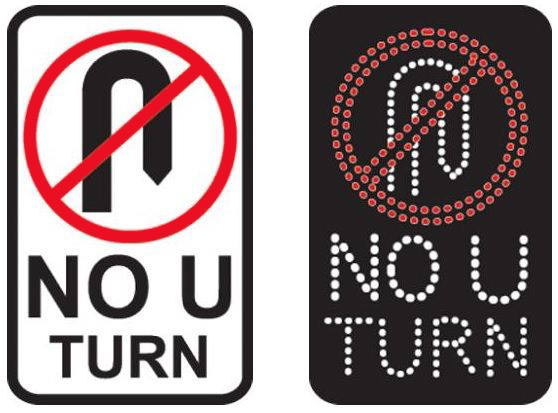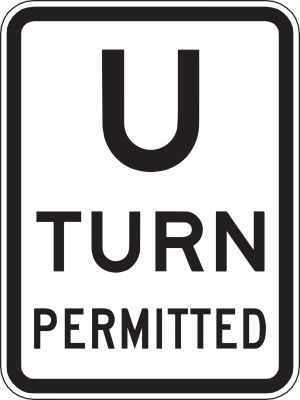U-turns and three-point turns
Three-point turns and U-turns can be tricky to do, and they're only legal in certain situations on NSW roads. Follow these rules, and tips for turning safely.
U-turns
You must not make a U-turn:
- at intersections without traffic lights where there’s a ‘No U-turn’ sign
- at intersections with traffic lights, unless there’s a ‘U-turn permitted’ sign
- across a single unbroken dividing line or double unbroken dividing line
- across double dividing lines with an unbroken line closer to you
- on motorways and freeways.
U-turn signs
The ‘No U-turn’ sign is a regulatory sign and must be obeyed by law.

You can make a U-turn at traffic lights where this sign is displayed.

Making a U-turn
When making a U-turn, you must:
- have a clear view of approaching traffic
- start your U-turn from the marked lane nearest to the centre of the road
- start your U-turn to the left of the centre of the road if there are no lane markings
- make the turn without obstructing traffic
- give way to vehicles and pedestrians
- indicate before you start to turn.
After you turn, check your mirrors and blind spots again, indicate, and only pull out when it’s clear and safe.
Three-point turns
You can do a three-point turn when a road is not wide enough to do a U-turn. It’s called a three-point turn because you usually need to do at least three turns to face the opposite direction.
A three-point turn generally takes longer to do than a U-turn. When you’re in heavy traffic or on a busy road, it’s safer to drive around the block or use a roundabout to turn around.

U-turns road safety video

Road rules: u-turns
Revise rules on doing u-turns in this short Transport video animation.